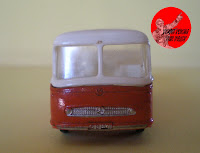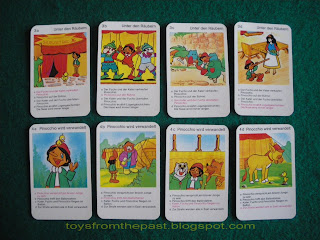MATCHBOX
1964 to 1966: EXPANSION YEARS
For this
entry, I will present a nice bundle of Matchbox cars made in the year 1965,
plus the Lincoln Continental that was released at the end of 1964.
This years
are important in the Matchbox history, because at this point, Matchbox was
selling more than half of their production outside the United Kingdom: mostly in
the United States, and also in Europe. This fact was observed by Matchbox, and
then, they decided to manufacture the first American cars in the 1-75 series
ever. The new approach would bring slightly bigger toys, plastic interiors and plastic
windows. By 1968, the whole 75 references had been replaced.
The
politics of reproducing foreign cars was a great success, and by 1965, the
company was producing over 2 million cars per week, and employing more than 3000
people. It is very interesting to note, that this year, Matchbox started
working with more than one cast for each model. Each cast has a lifespan of
around 5 million units, and that wasn’t enough, so it is not rare to find some
cast variants in several 1-75 models.
In 1966,
nothing changed much, each time more and more foreign vehicles, replaced the
older references… up to 20 references this year. A nice model from this year
was the Greyhound Bus,
the first American bus model in the British die-cast company. Although most of
these new 20 were American models, there were also new British (MG 1100) and German
models (Opel Diplomat, Mercedes-Benz 230SL)
Nr. 20: Chevrolet
Impala taxi was one of the very few models including the driver in the plastic
interiors of the car.
Nr. 30: 8-Wheel Crane is an undetermined truck model, which replaced in 1965 a similar Magirus-Deutz crane. It was discontinued in 1970, so there are versions with superfast wheels too.
Nr. 31: The Lincoln
Continental was probably one of the most beautiful models from that year
(1964). The real model, however became famous for the assassination of the U.S.
President J. F. Kennedy. Early Matchbox models were released in dark metallic
blue, since they were planned before that tragedy. Later models were released
in a turquoise (see pictures above), that were much different to the presidential car. This model
survived a few years, and in 1970 it was released with superfast wheels in metallic
gold color.
Nr. 54: The
Cadillac S&S Ambulance was the first American Ambulance released by
Matchbox. In the 1-75 catalogue, coexisted with a Bedford
ambulance, that sold better in Europe.
Nr. 56: The Fiat
1500 is a extremely nice model, a sample of the first foreign (not-american)
cars ever made: this model plus a Ferrari Berlinetta, both Italian.
Nr. 68: The Mercedes
Coach appeared relatively late. The real bus (O 319) was in production between
1955 to 1965 approximately. The bus however looks great (and looked modern in
1965) with all those windows. The lower body is die-cast metal, while the upper
body is made of plastic.
Most
information for this article has been taken from the chapter 5 of the book “Matchbox
Cars: the first 50 years” by Mac Ragan. Although the book is out of print now, this
chapter can be read for free in Google Books.
To finish,
I’d like to recommend the following website, which is the only one that clearly
indicates the years of release and discontinuation of the Matchbox 1-75
series, as well as many interesting catalogues (British, American and German
editions) for free: http://www.hgm-matchbox.de/default.htm
FACTS AND FIGURES:
- Name: CHEVROLET IMPALA TAXI, 8-WHEEL CRANE, LINCOLN CONTINENTAL, CADILLAC S&S AMBULANCE, FIAT 1500 and MERCEDES COACH (Ref. 20C, 30C, 31C, 54B, 56B, 68B)
- Scale: 1:64, 1:100 the Bus and the 8-wheeled truck (approx.)
- Year: 1964 (Lincoln) and 1965 (rest)
- Company: Matchbox-Lesney (United Kingdom)
- Size: 6 to 7 cm (approx.)





































.jpg)
.jpg)
.jpg)
.jpg)
.jpg)
.jpg)
.jpg)
.jpg)


